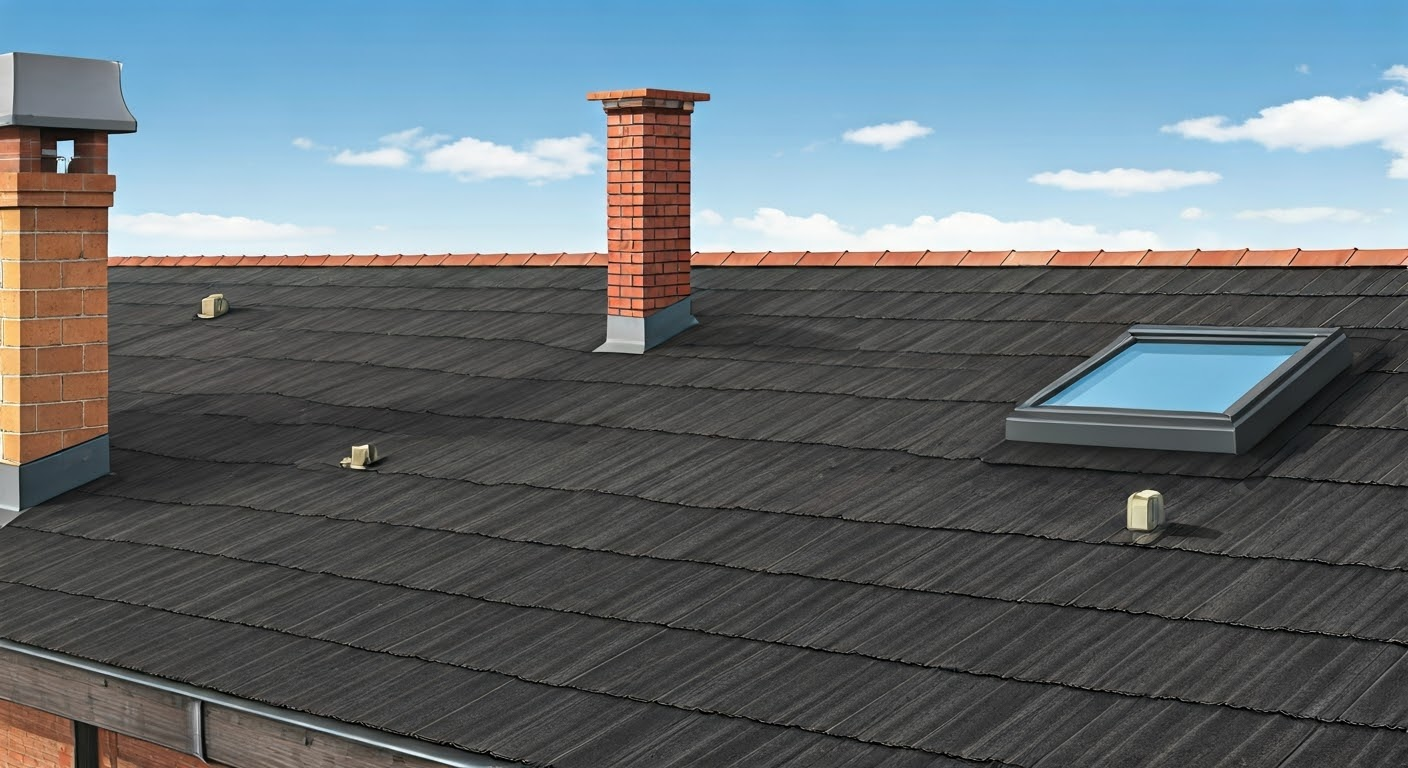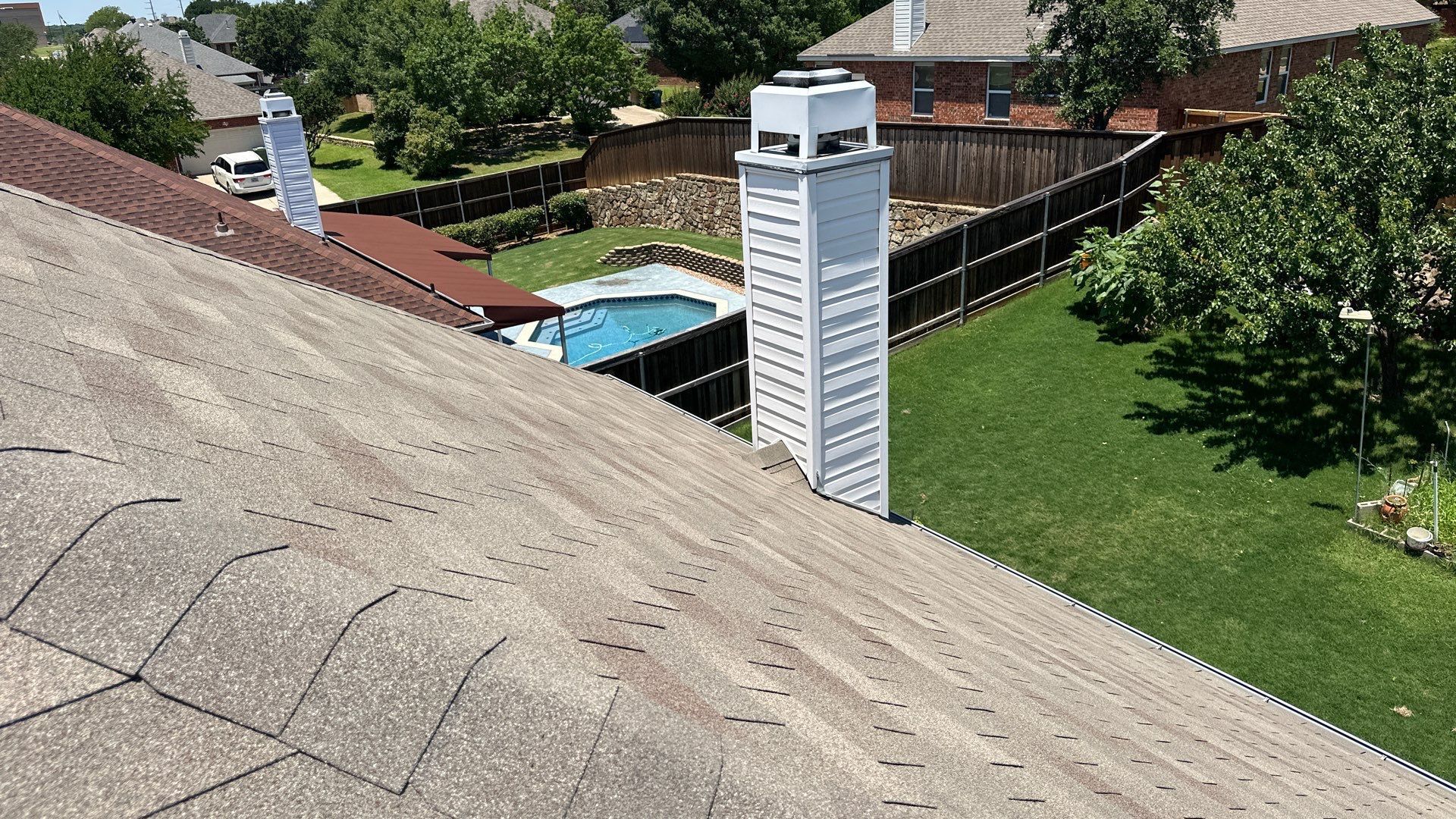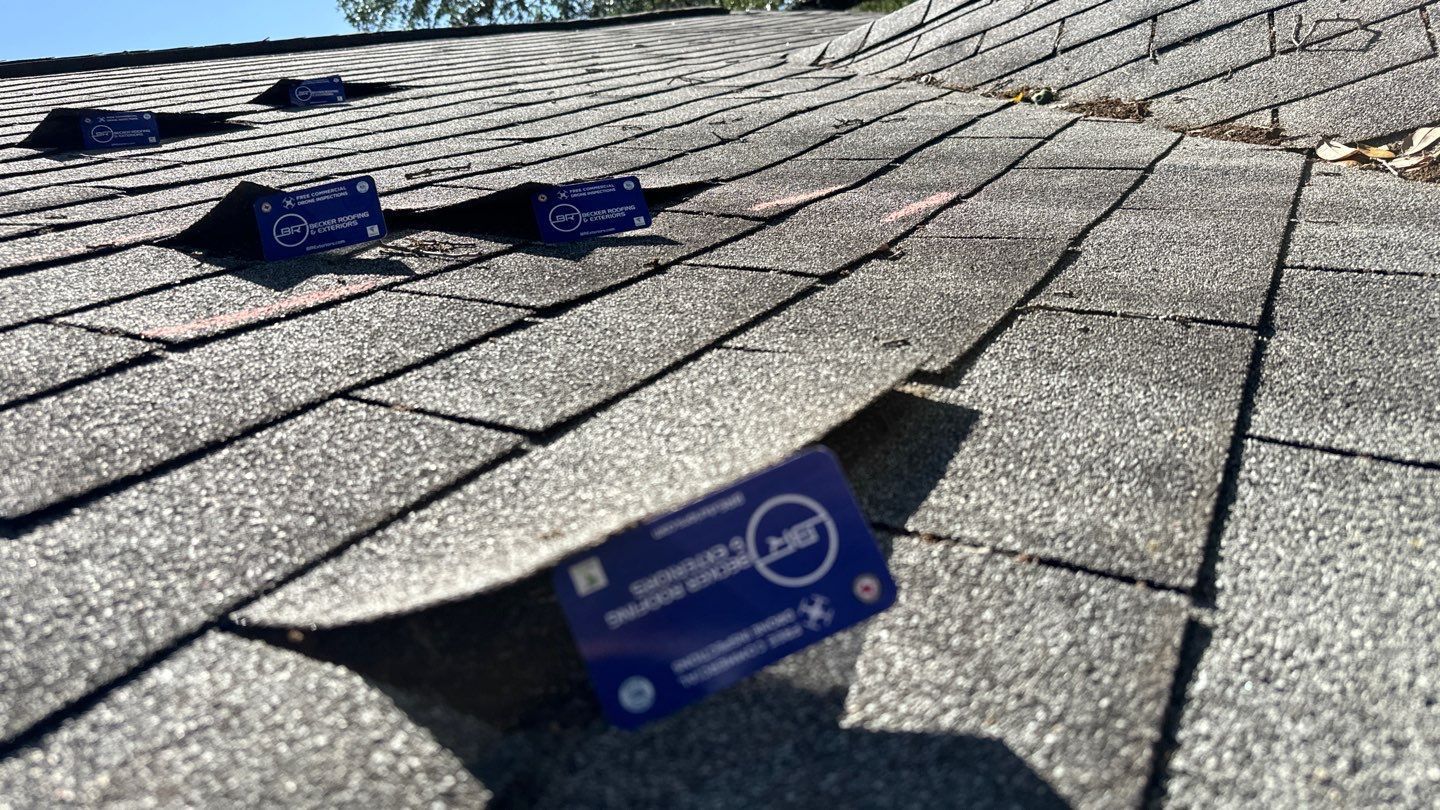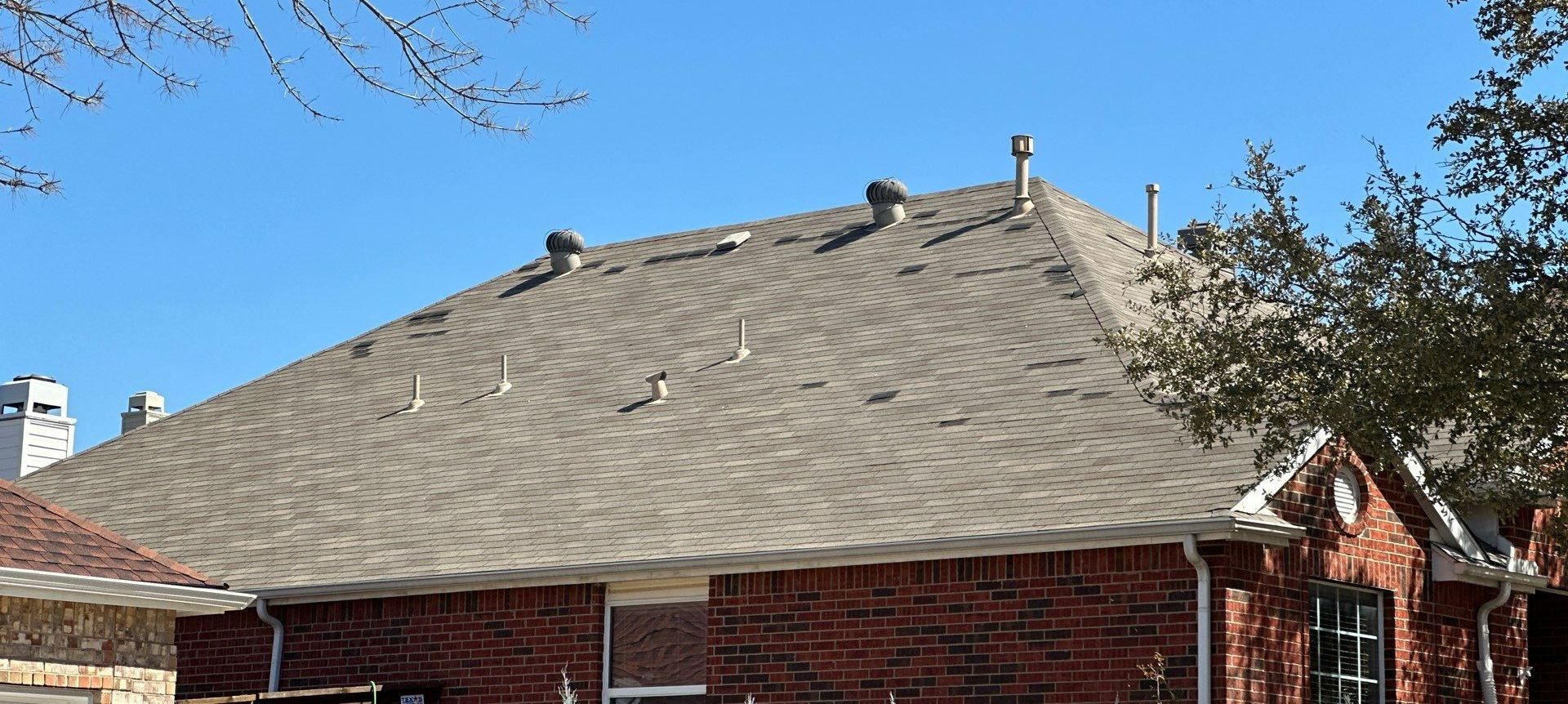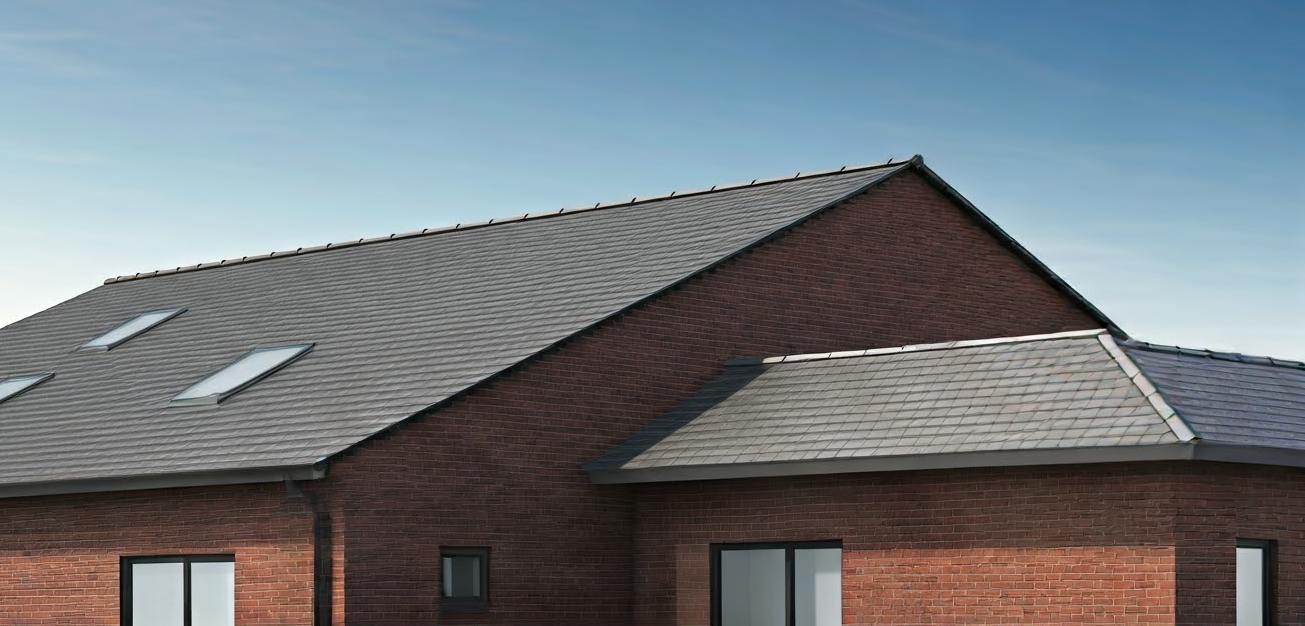Starter Strip in Roofing: The Ultimate Guide
Discover the essentials of starter strip in roofing or using 3 tab for a strong and durable roof. Explore more on our blog!

The Ultimate Guide to Starter Strip in Roofing
Key Highlights
- Starter shingles are an important component of a roofing system that lay the foundation for a roof's performance and durability.
- They are installed at the eaves and rakes of the roof to provide a barrier against leaks and wind damage.
- Starter strips have a sealant strip that ensures a watertight seal and prevents wind uplift.
- They come in a rectangular shape and are covered with dark roofing granules, making them compatible with any type of overlapping shingles.
- Proper nail placement and sealant application are crucial for the effective installation of starter strips.
- Choosing the right starter strip for your roof depends on factors such as climate, roof slope, and shingle type.
Introduction
Starter shingles may not be the most glamorous aspect of a roofing system, but they play a crucial role in ensuring its longevity and performance. These unsung heroes are often overlooked, but without them, your roof would be vulnerable to leaks and wind damage.
When it comes to roofing materials, the focus is usually on the finished shingles that create the visible layer of the roof. However, it's the base material, the starter shingles, that provide the foundation for the entire roof. Starter shingles are the first layer of shingles installed on the roof, just before the first course of the finish shingles. They are specifically designed to cover the joints between the finish shingles, providing a watertight seal and preventing wind uplift.
Starter shingles are rectangular in shape and come with a sealant strip on the bottom. This sealant strip ensures a tight seal and prevents water from seeping into the roof. The upper layer of starter shingles is covered with dark roofing granules, which helps them blend in with the finish shingles. While starter shingles may not be visible once the roof is complete, their presence is essential for the overall performance and longevity of the roof.
In this ultimate guide, we will delve into the world of starter strips in roofing, exploring their role, installation techniques, and the importance of choosing the right starter strip for your roof. Whether you're a homeowner or a roofing contractor, understanding the importance of starter shingles is crucial for ensuring a reliable and durable roof.
Understanding Starter Strips in Roofing
To truly appreciate the importance of starter strips in roofing, it's essential to understand their purpose and how they fit into the overall roofing system. Starter strip shingles, also known as starter strips, are the first layer of shingles installed on the roof, just before the first course of the finish shingles. They provide a solid foundation for the roof and serve as a base for the subsequent layers of shingles.
Starter strips are typically rectangular in shape and are installed along the eaves and rakes of the roof. They cover the joints between the finish shingles, creating a smooth and seamless appearance. These strips are designed to be compatible with any type of overlapping roof shingles, ensuring a cohesive and uniform look.
The installation of starter strips is crucial for the overall integrity of the roof. They provide a solid surface for the finish shingles to adhere to, preventing them from slipping off in high winds or severe weather conditions. Additionally, starter strips help to create a watertight seal, preventing leaks and water damage to the roof deck.
Whether you're a homeowner or a roofing contractor, understanding the role and importance of starter strips is essential for ensuring a long-lasting and reliable roofing system. Proper installation and attention to detail can make a significant difference in the performance and longevity of your roof.
The Role of Starter Strips in Enhancing Roof Longevity
Starter shingles play a crucial role in enhancing the longevity of a roof by providing added protection against wind damage and leaks. When a roof is exposed to strong winds, the starter shingles act as a barrier, preventing the finish shingles from being lifted or blown off. This not only protects the roof from potential damage but also ensures that the shingles remain intact, extending the overall lifespan of the roof.
In addition to wind resistance, starter shingles also help to prevent leaks by creating a watertight seal. The sealant strip on the bottom of the starter shingles acts as a barrier, preventing water from seeping into the roof and causing damage to the underlying structure. By effectively sealing the joints between the finish shingles, starter strips contribute to the overall integrity and performance of the roof, enhancing its longevity.
Homeowners and roofing contractors should prioritize the proper installation of starter strips to ensure the long-term durability and functionality of the roof. By investing in high-quality starter shingles and following recommended installation practices, you can enhance the lifespan of your roof and avoid costly repairs and replacements down the line.
Comparing Starter Strips and Traditional 3-Tab Shingles
Starter strips and traditional 3-tab shingles serve different functions in a roofing system, and it's important to understand their differences and benefits. Here's a comparison between the two:
- Purpose: Starter strip shingles are specifically designed to provide a solid foundation for the roof and create a watertight seal at the eaves and rakes. On the other hand, traditional 3-tab shingles are the main roofing material and cover the entire roof surface.
- Installation: Starter strips are installed before the first course of finish shingles, while 3-tab shingles are installed as the main roofing material.
- Compatibility: Starter strips are compatible with any type of overlapping roof shingles, ensuring a cohesive appearance. 3-tab shingles, on the other hand, are not compatible with starter strip shingles.
- Appearance: Starter strip shingles are not visible once the finish shingles are installed, while 3-tab shingles are the visible layer of the roof and contribute to its overall aesthetic.
When considering the choice between starter strips and traditional 3-tab shingles, it's important to consult with roofing professionals and follow the manufacturer's recommendations to ensure proper installation and compatibility with the chosen roofing system.
The Evolution of Starter Strips in Roofing Technology
The roofing industry has seen significant advancements in technology and materials over the years, and starter strips are no exception. Technological advancements have led to the development of dedicated starter strips that offer improved performance and durability.
In the past, traditional three-tab shingles were sometimes used as starter strips, with the tabs facing up the roof. However, this method was not as effective in preventing leaks and wind damage. With the introduction of dedicated starter strips, roofing contractors now have access to specialized products that are designed to provide a watertight seal and enhance the overall performance of the roof.
Roofing manufacturers have also focused on improving the design and functionality of starter strips. These advancements have led to the development of fully adhered starter strips, which offer enhanced wind resistance and protection against leaks. With the introduction of dual-adhesive technology, fully adhered starter strips provide a watertight seal even in high wind zones.
As the roofing industry continues to evolve, it's important for homeowners and roofing contractors to stay updated on the latest advancements in starter strip technology. By choosing the right starter strip and following recommended installation practices, you can ensure a reliable and long-lasting roofing system.
From 3-Tab Shingles to Dedicated Starter Strips
Traditionally, roofing contractors used three-tab shingles as starter strips, with the tabs facing up the roof. However, this method had limitations in terms of preventing leaks and wind damage. As the demand for improved performance and longevity increased, roofing manufacturers introduced dedicated starter strips that are specifically designed for this purpose.
Dedicated starter strips are now widely used by roofing contractors to provide a solid foundation for the roof and enhance its overall integrity. These specialized strips offer a watertight seal, preventing leaks and water damage to the underlying structure. They also provide enhanced wind resistance, reducing the risk of shingle blow-offs during severe weather conditions.
By using dedicated starter strips, roofing contractors can ensure a professional and reliable installation that meets industry standards and provides long-term protection for the roof. Homeowners can have peace of mind knowing that their roof is installed with the highest level of craftsmanship and attention to detail.
Introduction to Fully Adhered Starter Strips
Fully adhered starter strips are a recent innovation in the roofing industry that offer enhanced wind resistance and protection against leaks. These specialized strips feature a dual-adhesive technology that provides a watertight seal and ensures a secure bond between the shingles and the roof deck.
One popular example of fully adhered starter strips is IKO's Dura-Grip® starter strips. These strips are equipped with a high-strength adhesive on both the top and bottom surfaces, creating a strong bond that withstands high winds and extreme weather conditions. The dual-adhesive technology also ensures that the starter strips remain in place during installation, reducing the risk of shingle blow-offs.
Roofing companies and contractors are increasingly adopting fully adhered starter strips to provide their customers with superior protection and performance. By using these advanced starter strips, roofing professionals can enhance the overall durability and longevity of the roof, offering homeowners a reliable and long-lasting solution.
Installation Insights for Starter Strips
Proper installation of starter strips is essential for ensuring the performance and longevity of the roof. Whether you're a roofing contractor or a homeowner, understanding the installation process can help you make informed decisions and avoid common mistakes.
Starter strips are typically installed at the eaves and rakes of the roof, providing a solid foundation for the finish shingles. The installation process involves proper placement and alignment techniques, as well as securing the perimeter with nails and adhesive strategies. By following recommended installation practices, roofing contractors and homeowners can ensure a professional installation that maximizes the protection and durability of the roof.
It's important to consult with roofing professionals and follow the manufacturer's guidelines for the specific starter strip product being used. By investing in proper installation techniques, you can avoid potential issues and ensure that your roof performs optimally for years to come.
Proper Placement and Alignment Techniques
Proper placement and alignment of starter strips are crucial for ensuring a professional and watertight installation. Whether you're installing starter strips at the eaves or the rakes of the roof, following these techniques will help create a clean and aesthetically pleasing finish:
- Eaves: Starter strips should be positioned along the eaves, covering the joints between the finish shingles. They should overhang the edge of the roof by ¼ inch to ¾ inch.
- Rakes: Starter strips should also be installed along the rake edges, creating a straight line for the finish shingles to follow. They should align with the edge of the starters and overhang the edge of the roof by ¼ inch to ¾ inch.
- Alignment: The starter strips should be installed in a straight line, ensuring a uniform appearance. This can be achieved by using a chalk line or a straightedge as a guide during the installation process.
By paying attention to proper placement and alignment techniques, you can achieve a professional and visually pleasing finish, enhancing the overall appearance and performance of your roof.
Securing the Perimeter: Nailing and Adhesive Strategies
Properly securing the perimeter of the starter strips is crucial for ensuring a strong and durable roofing system. Both nailing and adhesive strategies play a vital role in creating a watertight seal and preventing wind uplift. Here are some key considerations for securing the perimeter:
- Nailing Strategies: When nailing starter strips, it's important to position the nails correctly. For traditional three-tab shingles, the nails should be placed just below the sealant and above each cutout. For laminated shingles, follow the pre-defined nail line. For starter strip shingles, the nail placement isn't strictly defined, but they should be positioned about 3 to 4 inches from the edge of the shingle to avoid interference with the sealant system.
- Adhesive Strategies: Starter strips often come with a sealant strip on the bottom, which provides a watertight seal and prevents wind uplift. Ensure that the sealant strip is properly positioned along the lower edge of the shingles to create a secure bond with the roof deck.
By following recommended nailing and adhesive strategies, you can ensure a secure and long-lasting installation that protects your roof from leaks and wind damage.
Why Fully Adhered Starter Strips Are a Game-Changer
Fully adhered starter strips have revolutionized the roofing industry by offering enhanced protection against wind damage and leaks. Here are a few reasons why fully adhered starter strips are a game-changer:
- Superior Wind Resistance: Fully adhered starter strips provide a strong bond between the shingles and the roof deck, significantly reducing the risk of shingle blow-offs during high winds and storms.
- Watertight Seals: The dual-adhesive technology ensures a watertight seal, preventing leaks and water damage to the underlying structure.
- Extended Warranties: Many roofing manufacturers offer extended warranties for roofs installed with fully adhered starter strips, providing homeowners with added peace of mind and protection.
By choosing fully adhered starter strips, homeowners can invest in a roofing system that offers superior protection and durability, ensuring long-term performance and reliability.
The Dual-Adhesive Advantage in High Wind Zones
One of the key advantages of fully adhered starter strips is their dual-adhesive technology, which provides added protection in high wind zones. Here's how the dual-adhesive advantage works:
- Strong Bond: The top and bottom surfaces of the fully adhered starter strips are equipped with a high-strength adhesive. This creates a strong bond between the shingles and the roof deck, reducing the risk of shingle blow-offs during high winds.
- Watertight Seals: The dual-adhesive technology ensures a watertight seal, preventing leaks and water damage to the underlying structure.
- Enhanced Wind Resistance: By effectively sealing the shingles and preventing wind uplift, fully adhered starter strips contribute to the overall wind resistance of the roof, reducing the risk of damage during storms and severe weather conditions.
For homeowners in high wind zones, fully adhered starter strips offer an added layer of protection and peace of mind, ensuring a durable and reliable roofing system.
Ensuring Watertight Seals at the Roof's Edge
Watertight seals are essential for protecting the roof from water damage and leaks, especially at the roof's edge. Here's how starter strips contribute to ensuring watertight seals:
- Sealant Strip: Starter strips are equipped with a sealant strip on the bottom, which creates a watertight seal when properly positioned along the roof's edge. This sealant strip prevents water from seeping into the roof and causing damage to the underlying structure.
- Water Shield: Installing a water shield, such as a self-adhering membrane, along the eaves and rakes further enhances the watertight seal. This additional layer of protection acts as a barrier, preventing water from penetrating the roof system.
- Drip Edge: A drip edge is another crucial component for ensuring watertight seals at the roof's edge. It directs water away from the roof and prevents it from seeping into the underlying structure.
By combining starter strips, water shields, and drip edges, homeowners can ensure watertight seals at the roof's edge, protecting their roofs from water damage and leaks.
Choosing the Right Starter Strip for Your Roof
Choosing the right starter strip is essential for ensuring a proper and reliable installation. Here are some factors to consider when selecting a starter strip for your roof:
- Roofing Material: Consider the type of shingles you're using for your roof, such as architectural shingles or 3-tab shingles, and choose a starter strip that is compatible with the selected roofing material.
- Climate: Take into account the climate in your area, including temperature extremes and weather patterns. Certain starter strips may offer enhanced protection against specific weather conditions.
- Roof Slope: Consider the slope of your roof, as steep roofs may require specific starter strip configurations to ensure proper installation and performance.
By considering these factors and consulting with roofing professionals, you can choose the right starter strip for your roof, ensuring a reliable and durable installation.
Factors to Consider: Climate, Roof Slope, and Shingle Type
When choosing a starter strip for your roof, there are several factors to consider to ensure compatibility and optimal performance. Here are some key factors to keep in mind:
- Climate: Consider the climate in your area, including temperature fluctuations, rainfall, and wind conditions. Some starter strips are designed to withstand specific climate challenges, such as high winds or extreme temperatures.
- Roof Slope: The slope of your roof plays a role in the installation and performance of the starter strip. Steeper roofs may require special installation techniques or specific starter strip configurations.
- Shingle Type: Different shingle types, such as architectural shingles or 3-tab shingles, may have specific requirements for starter strips. Consult the manufacturer's guidelines to ensure proper compatibility.
By considering these factors and consulting with roofing professionals, you can choose a starter strip that is compatible with your roof's unique characteristics, ensuring a reliable and long-lasting installation.
The Cost-Benefit Analysis of Different Starter Strip Options
When considering different starter strip options, it's important to conduct a cost-benefit analysis to determine the best choice for your roofing project. Here are some factors to consider:
- Cost: Compare the cost of different starter strip options, including the material, installation requirements, and long-term maintenance.
- Performance: Evaluate the performance characteristics of each starter strip, such as wind resistance, water resistance, and durability.
- Longevity: Consider the expected lifespan of each starter strip option and how it aligns with your long-term goals for your roof.
- Warranty: Review the warranty offered by the manufacturer for each starter strip option, as this can provide additional peace of mind and protection.
By conducting a thorough cost-benefit analysis, homeowners can make an informed decision about the best starter strip option for their roofing project, balancing cost, performance, longevity, and warranty.
Common Mistakes to Avoid with Starter Strips
Proper installation of starter strips is essential for ensuring the performance and integrity of your roofing system. Here are some common mistakes to avoid:
- Incorrect Nail Placement: Improper nail placement can compromise the sealant strip and lead to leaks and wind damage. Follow the manufacturer's guidelines for nail placement.
- Overlooking Sealant Application: Failing to apply sealant properly along the lower edge of the starter strips can result in a weak or ineffective seal. Ensure that the sealant is positioned correctly for a watertight seal.
- Inadequate Alignment: Incorrect alignment of starter strips can result in an uneven and jagged finished look. Use a chalk line or straightedge as a guide for proper alignment.
By avoiding these common mistakes and following recommended installation practices, homeowners and roofing contractors can ensure a professional and reliable installation of starter strips.
Incorrect Nail Placement and Its Consequences
Incorrect nail placement during the installation of starter strips can have serious consequences for the overall integrity of the roof. Here are some potential consequences of incorrect nail placement:
- Leaks: Improper nail placement can compromise the sealant strip, resulting in leaks and water damage to the underlying structure. Water can seep through the gaps and enter the roof system, causing significant damage over time.
- Gutter Damage: If nails are placed too close to the edge of the starter strip, they can interfere with the proper functioning of the gutter system. Improper nail placement may prevent water from flowing freely into the gutters, leading to overflow and potential damage to the roof and surrounding areas.
To avoid these consequences, it's essential to follow the manufacturer's guidelines for nail placement and consult with roofing professionals for proper installation techniques.
Overlooking the Importance of Sealant Application
Proper sealant application is crucial for creating a watertight seal and preventing leaks. Overlooking this important step during the installation of starter strips can lead to a compromised roof system. Here are the potential consequences of overlooking sealant application:
- Leaks: Without a proper sealant application, the joints between the finish shingles may be vulnerable to leaks. Water can seep through the gaps and damage the underlying structure, leading to costly repairs and potential mold growth.
- Lack of Watertightness: The sealant strip on the starter strip is designed to create a watertight seal, preventing water from penetrating the roof system. A proper sealant application ensures that the sealant strip performs its intended function, protecting the roof from water damage.
To ensure a watertight and leak-free roof, homeowners and roofing contractors should pay close attention to sealant application and follow the manufacturer's guidelines for proper installation techniques.
Maintenance and Inspection of Starter Strips
Regular maintenance and inspection of starter strips are essential for ensuring the ongoing performance and durability of your roof. Here are some key considerations for maintaining and inspecting starter strips:
- Routine Checks: Schedule regular inspections of your roof, including the starter strips, to identify any signs of damage or deterioration.
- Optimal Performance: Look for signs of wear, such as loose or damaged starter strips, and address any issues promptly to maintain the integrity of the roof.
- Professional Assistance: If you're unsure about the condition of your starter strips or need assistance with maintenance, consult with a professional roofer who can provide expert guidance and recommendations.
By prioritizing maintenance and regular inspections, homeowners can extend the lifespan of their roof and address any issues before they become major problems.
Routine Checks for Optimal Performance
Routine checks are essential for ensuring the optimal performance of starter strips and the overall roofing system. Here are some key points to consider:
- Visual Inspection: Regularly inspect the starter strips for any signs of damage, such as cracks, loose nails, or gaps between the shingles.
- Sealant Integrity: Check the condition of the sealant strip on the starter strips to ensure it remains intact and provides a watertight seal.
- Maintenance Schedule: Establish a maintenance schedule with a professional roofing contractor to conduct regular inspections and address any issues promptly.
- Professional Assistance: If you're unsure about the condition of your starter strips or need assistance with maintenance, consult with a professional roofer who can provide expert guidance and recommendations.
By conducting routine checks and addressing any issues promptly, homeowners can ensure the optimal performance and longevity of their roofing system.
When to Replace Starter Strips
Knowing when to replace starter strips is essential for maintaining the overall performance and integrity of your roofing system. Here are some factors to consider:
- Age and Wear: Starter strips, like any roofing material, have a lifespan and can deteriorate over time. Consider the age and condition of your starter strips, and replace them if they show signs of wear or damage.
- Roofing Materials: If you're replacing the entire roof or using new roofing materials, it's often recommended to replace the starter strips as well. This ensures compatibility and maximizes the performance of the new roofing system.
- Warranty Considerations: Consult the manufacturer's warranty for your starter strips to determine if they need to be replaced within a specific timeframe or under certain conditions.
By replacing starter strips as needed, homeowners can maintain the overall performance and reliability of their roofing system, ensuring long-term protection and peace of mind.
Conclusion
In conclusion, understanding the significance of starter strips in roofing is essential for ensuring the longevity and performance of your roof. By comparing traditional 3-tab shingles with modern starter strip technology, you can make informed decisions about enhancing your roof's durability. Proper installation techniques, such as secure nailing and adhesive strategies, play a crucial role in safeguarding your roof against high winds and water damage. Choosing the right starter strip based on climate, roof slope, and shingle type is vital for optimal performance. Avoiding common mistakes and conducting regular maintenance checks can help prevent costly repairs in the future. Stay informed about the best practices to maximize the benefits of starter strips for your roofing needs.
Frequently Asked Questions
Can I reuse starter strips when replacing shingles?
Yes, it is possible to reuse starter strips when replacing shingles, as long as they are in good condition and still provide a reliable seal. However, it's important to assess their condition and consult with a professional roofer to ensure they meet the necessary standards for reuse.
How do fully adhered starter strips compare to traditional methods in terms of cost?
Fully adhered starter strips may have a higher upfront cost compared to traditional methods. However, they offer enhanced performance and durability, which can lead to long-term cost savings and reduced maintenance needs. Consult with a professional roofer to determine the best option for your specific project.
Are there any specific brands of starter strips recommended by roofing professionals?
Roofing professionals often recommend using trusted brands for starter strips, such as IKO's Leading Edge Plus or Dura-Grip® starter strips. These brands have a proven track record of performance and reliability in the roofing industry. Consult with a professional roofer to determine the best brand for your specific project.
In what scenarios would I need to double up on starter strips?
In high wind zones or areas prone to severe weather conditions, roofing contractors may recommend doubling up on starter strips to enhance the wind resistance and overall performance of the roof. Consult with a professional roofer to determine the best approach for your specific location.
Can starter strips be used with all types of roofing shingles?
Starter strips are designed to be compatible with all types of roofing shingles, including architectural shingles. They provide a solid foundation for the shingles and ensure a watertight seal. Consult with a professional roofer to ensure proper compatibility between the starter strips and your chosen roofing shingles.
What are the signs that my starter strips need replacing?
Signs that your starter strips may need replacing include visible signs of damage or wear, such as cracks, loose nails, or gaps between the shingles. Conducting regular roof inspections can help identify any issues and determine if replacement is necessary. Consult with a professional roofer for a thorough assessment.


